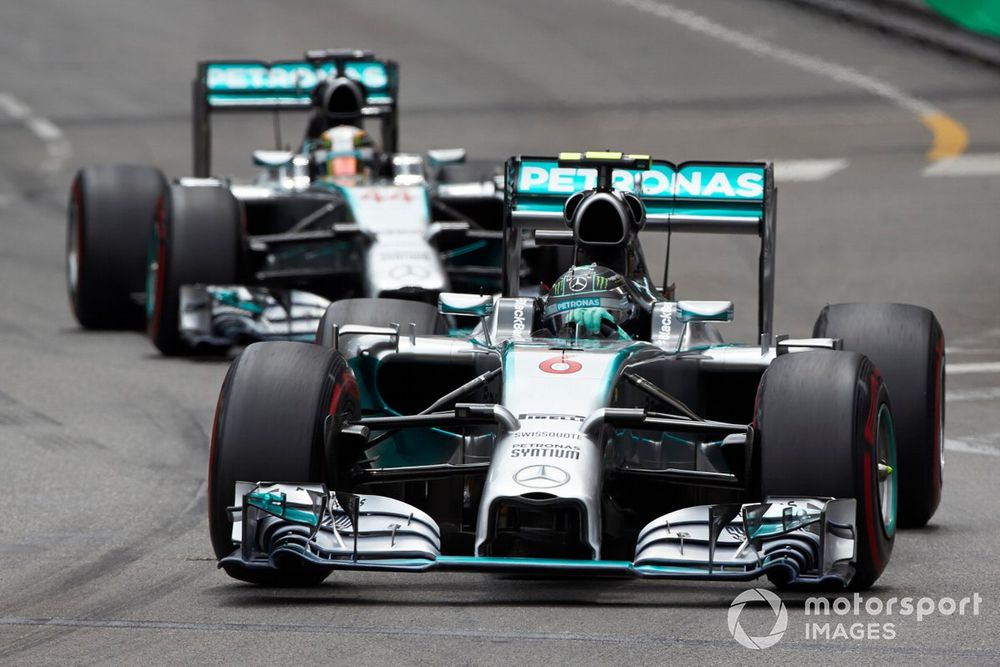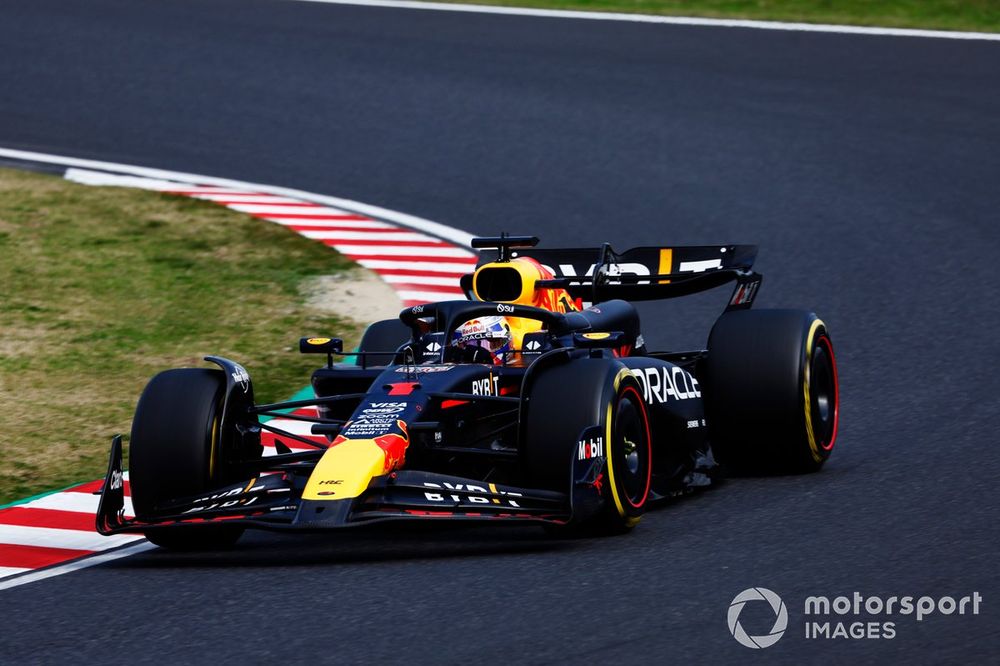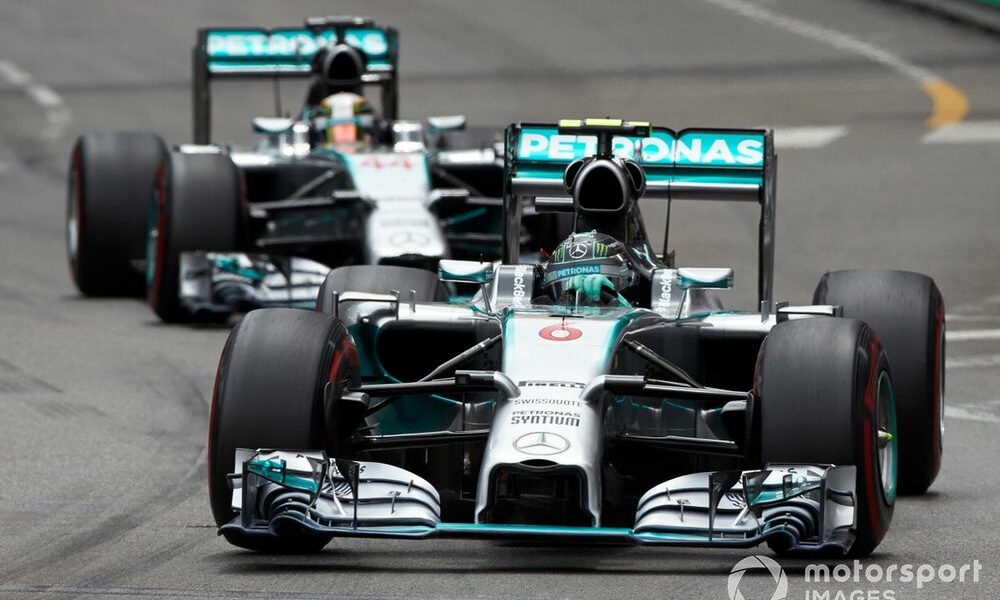While Red Bull remains the team to beat in F1 right now, Newey has no doubt that the opposition is closing in, as the world champion squad finds it harder and harder to make gains with its car.
He sees no reason why one of his outfit’s competitors cannot even leap ahead under the current rules set before things are thrown up in the air by the new car and engines that are coming from 2026.
Newey says what is happening right now is no different to previous rules cycles, where one team starts with an advantage that is steadily wiped away as everyone gets a better understanding of things.
Speaking to Autosport about how he saw things playing out into 2026, he says that history suggests the battles will get tighter before the new cars probably leave one team clear out in front again.
“People do lament that the results have been dominated, fortunately in our case by us, but by one team during these rules to date,” he said.
“But that can obviously change. It’s definitely closing up. And who knows what will happen next year? One of our rivals could easily overtake us.
“If you look at history, then whenever there’s a regulation change, more often than not one team reads it better than another. And there’s a period of domination.

Nico Rosberg, Mercedes F1 W05 Hybrid, leads Lewis Hamilton, Mercedes F1 W05
Photo by: Steve Etherington / Motorsport Images
“We had that with Mercedes on the PU side, when there was a big PU change in 2014. We’ve had it in other times there have been regulation changes.
“We also had this huge change in 2022, and the grid is probably starting to converge. I’d be amazed if it wasn’t, and I think it’s going to be a much tighter fight for us this year than it was last year.
“And no doubt it will be an even tighter fight for everybody next year. So, just as everything’s starting to converge, and fans are starting to get what they want, we have got an even bigger change – because it’s the first time I can remember we’ve got a new PU and chassis happening at the same time.
“So, the chances of that blowing the grid apart have to be pretty significant.”
F1 chiefs are currently working to finalise the 2026 chassis regulations, which will include active aero to help maximise performance for the new turbo hybrid power units.
And having been initially not too excited by the current rules set, Newey suspects there is going to be plenty for him to get his teeth into over the next few years.
“I think I’ll be honest with myself that prior to these rules coming out, I was somewhat critical of them and certainly fairly uninspired by then,” he explained.

Max Verstappen, Red Bull Racing RB20
Photo by: Zak Mauger / Motorsport Images
“It looked as if they were excessively prescriptive, and there wouldn’t be much freedom within them. But there was a bit of a relaxation on them near the end, because a lot of other teams felt the same. And then within that slight relaxation, it turns out that actually there’s huge amounts of detail that’s involved in optimising the car to these rules.”
But as the current ground effect era enters its third year, Newey says he has seen signs of teams reaching the limit of what is possible.
“The year-on-year gains teams have made now into the third season is reasonably significant,” he said.
“Certainly, on our side, we’re definitely flattening out our aero development rates in terms of percentage gains per month. They are definitely starting to asymptote, as you would eventually expect with any set of regulations.
“So in that sense, maybe, from an engineering point of view, it is about time we had a new set!”

